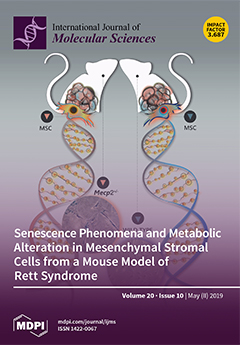Sapindus mukorossi seed oil is commonly used as a source for biodiesel fuel. Its phytochemical composition is similar to the extracted oil from
Sapindus trifoliatus seeds, which exhibit beneficial effects for skin wound healing. Since
S. mukorossi seed shows no cyanogenic property, it
[...] Read more.
Sapindus mukorossi seed oil is commonly used as a source for biodiesel fuel. Its phytochemical composition is similar to the extracted oil from
Sapindus trifoliatus seeds, which exhibit beneficial effects for skin wound healing. Since
S. mukorossi seed shows no cyanogenic property, it could be a potential candidate for the treatment of skin wounds. Thus, we evaluated the effectiveness of
S. mukorossi seed oil in the treatment of skin wounds. We characterized and quantified the fatty acids and unsaponifiable fractions (including β-sitosterol and δ-tocopherol) contained in
S. mukorossi seed-extracted oil by GC-MS and HPLC, respectively. Cell proliferation and migratory ability were evaluated by cell viability and scratch experiments using CCD-966SK cells treated with
S. mukorossi oil. The anti-inflammatory effects of the oil were evaluated by measuring the nitric oxide (NO) production in lipopolysaccharide-treated RAW 264.7 cells. Antimicrobial activity tests were performed with
Propionibacterium acnes,
Staphylococcus aureus, and
Candida albicans using a modified Japanese Industrial Standard procedure. Uniform artificial wounds were created on the dorsum of rats. The wounds were treated with a carboxymethyl cellulose (CMC)/hyaluronic acid (HA)/sodium alginate (SA) hydrogel for releasing the
S. mukorossi seed oil. The wound sizes were measured photographically for 12 days and were compared to wounds covered with analogous membranes containing a saline solution. Our results showed that the
S. mukorossi seed oil used in this study contains abundant monounsaturated fatty acids, β-sitosterol, and δ-tocopherol. In the in vitro tests,
S. mukorossi seed oil prompted cell proliferation and migration capability. Additionally, the oil had significant anti-inflammatory and anti-microbial activities. In the in vivo animal experiments,
S. mukorossi seed oil-treated wounds revealed acceleration of sequential skin wound healing events after two days of healing. The size of oil-treated wound decreased to half the size of the untreated control after eight days of healing. The results suggest that
S. mukorossi seed oil could be a potential source for promoting skin wound healing.
Full article






